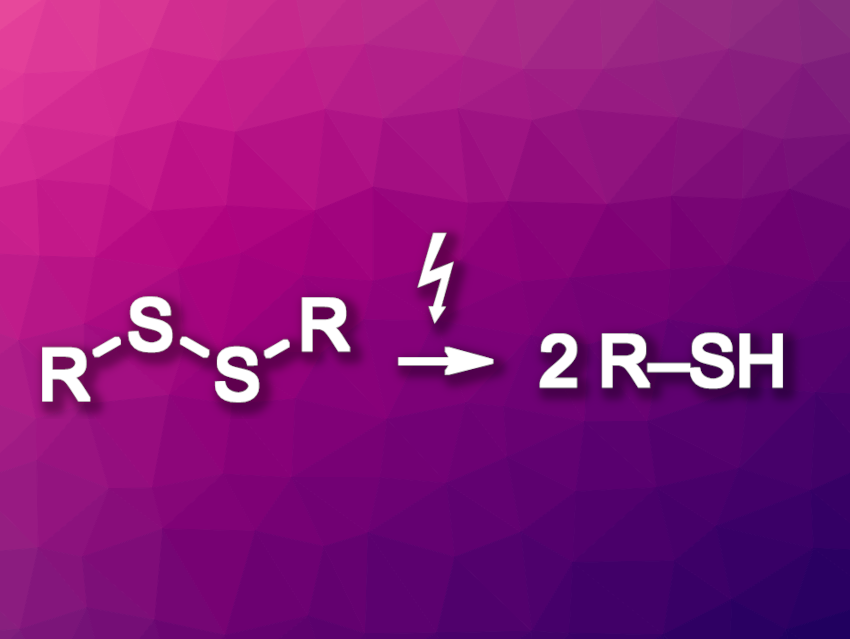The reduction of disulfides is generally performed using stoichiometric reagents. Although this type of reaction can be useful in a variety of applications, there is a lack of catalytic approaches. Electrocatalytic methods could be particularly interesting in this context and might provide practical, sustainable reactions.
Serge Ruccolo, Merck & Company, Inc., Rahway, NJ, USA, and colleagues have developed a catalytic system for the electroreduction of a wide variety of disulfides, from small molecules to proteins. The team used an undivided electrochemical cell for electrolysis under an N2 atmosphere with a zinc anode, a graphite cathode, a potassium phosphate buffer as the electrolyte, ethylenediaminetetraacetic acid (EDTA) as an additive, and vitamin B12 (which has a cobalt center) as the catalyst.
Under these conditions, the researchers observed the reduction of a broad range of disulfide substrates to the corresponding thiols with good to excellent conversions. The scope of the method includes small molecules such as 2,2′-dipyridyl disulfide, disulfides corresponding to biologically relevant thiols such as glutathione or coenzyme A, as well as disulfide bonds in peptides such as oxytocin and proteins such as fibrinogen.
- Electrocatalytic Reduction of Disulfide Bonds across Chemical Modalities,
Serge Ruccolo, Marion Emmert, Cecilia Bottecchia, Yangzhong Qin, Rodell Barrientos, Kelly Raymond, Monica Haley,
Org. Lett. 2024.
https://doi.org/10.1021/acs.orglett.4c01990




